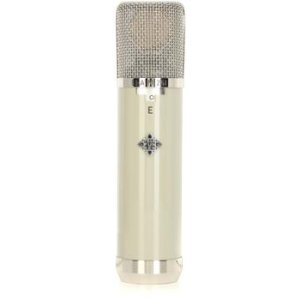

I also tried some NOS Telefunken smooth plates and didnt care for the sound. Continue on down the page to learn about the history of these mic pres and their. From their creation in 1950s Germany to their use in the world’s most famous studios, these beautiful, rich sounding tube mic pres have become a staple on kick, snare, vocals, bass, etc. Never taking their foot off the gas though, Telefunken continues to set the pace in the music industry in terms of quality, tone and durability.The V72 and V76 microphone preamps from TAB/Telefunken are two of the most time honored pieces of gear in recording history. But this review isn't about that microphone – it's about the intelligence gathered in the process, and how that might translate into a more affordable package like the Telefunken TF51.Founded in 1903, Telefunken was considered a trail-blazer in the world of microphone technology at the time. With great transient response and a high SPL tolerance, the M60 finds itself at home in applications like piano miking and acoustic guitar.Telefunken have spent the last eighteen years endeavoring to recreate the ELA M 251 in painstaking detail, using the best available components and methods.
Tube condenser microphones are simple devices. The orderly layout and high-quality polystyrene capacitors made a good first impression, but I was most interested in three key components. The TF51 is part of Telefunken's new Alchemy Microphone Series, which also includes the TF29 Copperhead and TF39 Copperhead Deluxe, as well as the TF47 (a combination of design elements from the U 47 and M 49).The TF51's decidedly contemporary exterior is attractive, but I couldn't resist unthreading the base, sliding off the body shell, and having a look at what's underneath. The first of these appointments are apparent immediately upon opening the fully-accessorized case: 7-pin XLR and power cables, a compact-but-sturdy power supply unit (with pattern selector), a soft mic cover/bag, and a pair of stand mounts (both fixed and suspended). EEC81 (12AT7).We should be clear that "more affordable" does not in this case, mean "cheap." Although the TF51 isn't the company's flagship model, it's positioned as a solid mid-priced microphone with some luxury appointments that can excel in professional environments.
While no new production tube can compare to the vintage GE "five-star" 6072A tube revered by 251 purists, this is likely the best currently-manufactured 12AY7 type. They also tend to be expensive bits, so if a microphone is to be both good and affordable, managing their cost in the smartest way is critical.By examining the included 12AY7/6072 tube's mica spacers and plate structure, I quickly determined that it was manufactured by New Sensor Corporation in Saratov, Russia. Those three parts – the capsule, tube, and transformer – perform the bulk of the work occurring in the microphone, and their quality will do much to determine whether or not the microphone sounds any good. A vacuum tube and transformer then boost this tiny signal's amplitude and lowers its impedance, rendering it suitable for the input of a mic preamp.
While the flagship ELA M 251 uses a capsule made in Telefunken's Connecticut laboratory, the TF51 has its capsule built in China to Telefunken's specifications before being quality-controlled in house. Those who prefer NOS 12AY7s can always experiment with alternatives – the stock tube is socketed with just enough room for an easy swap.The capsule is always the tricky bit in more affordable microphones, and here Telefunken employs a similar strategy: endeavor to source the best available imported part, then employ rigorous selection methods. All in all, the TF51's tube strategy is quite sensible for a mic designed for accessible scale production. This was probably a wise inclusion, as the New Sensor Corporation tubes' mechanical stability tends to fall well short of the aforementioned triple-mica GE varietal. Two silicone O-rings apply pressure to the glass envelope near the mica spacers (likely as a hedge against vibration-induced microphonic behavior).

This is not a criticism, necessarily – while I chose the AKG C414 for the leads, the TF51 got the nod for background vocal stacks. Overall, the TF51 struck me as a bit more sharply focused and less overtly seductive. The TF51 felt firm and forward, with an upper midrange that was edgier and more assertive its bottom end tighter and more-contained.
But if you need to grow a small mic locker, or step into the mid-priced tube condenser price bracket for the first time, it would be easy to do worse (and hard to do substantially better) for the money. If you have a studio full of five-figure vintage German and Austrian mics, the TF51 might be justifiably overlooked. We have (and like!) a pair of the now discontinued Blackspade UM17Rs, and this mic punches in the same weight class: it's one of the better options in a tube LDC for a little under two grand.


 0 kommentar(er)
0 kommentar(er)
